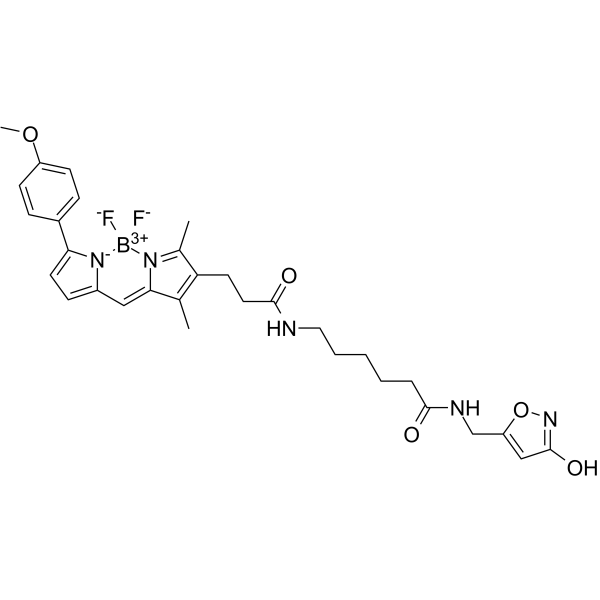Bodipy TMR-X muscimol
Modify Date: 2025-08-26 23:18:51

Bodipy TMR-X muscimol structure
|
Common Name | Bodipy TMR-X muscimol | ||
|---|---|---|---|---|
| CAS Number | 849464-08-0 | Molecular Weight | 607.46 | |
| Density | N/A | Boiling Point | N/A | |
| Molecular Formula | C31H36BF2N5O5 | Melting Point | N/A | |
| MSDS | N/A | Flash Point | N/A | |
Use of Bodipy TMR-X muscimolBodipy TMR-X muscimol is a Bodipy labeled Muscimol (HY-N2313) (Ex=543 nm, Em=572 nm). Muscimol is a GABAA agonist. Bodipy TMR-X muscimol can be used for imaging the spread of reversible brain inactivations[1]. |
| Name | Bodipy TMR-X muscimol |
|---|
| Description | Bodipy TMR-X muscimol is a Bodipy labeled Muscimol (HY-N2313) (Ex=543 nm, Em=572 nm). Muscimol is a GABAA agonist. Bodipy TMR-X muscimol can be used for imaging the spread of reversible brain inactivations[1]. |
|---|---|
| Related Catalog | |
| Target |
GABAA receptor[1] |
| In Vivo | Guidelines (Following is our recommended protocol. This protocol only provides a guideline, and should be modified according to your specific needs)[2]. 1. Rats are infused with Bodipy TMR-X muscimol as below: dilute the stock solution to 2 μg/μL (in PBS), infused into both hemispheres at a rate of 0.25 μL/min for a single minute, resulting in a final infusion volume of 0.25 μL and a final dose of 0.5 μg per side. 2. The animals are sacrificed by rapid decapitation 15 min after infusion in order to match the spread to what the experimental animals received immediately prior to behavioral testing. 3. The brains are removed and flash frozen in −45°C isopentane, stored at −80°C. 4. Coronal slices are sectioned at 60 μm. The slices are mounted on charged microscope slides and counterstained with DAPI. 5. The stained slices are incubated in a cool, dark room at room temperature for 3 d before being visualized with a confocal microscope. 6. A digital plate from the Paxinos and Watson (2007) rat brain atlas is overlaid on the image to visualize the spread. |
| References |
| Molecular Formula | C31H36BF2N5O5 |
|---|---|
| Molecular Weight | 607.46 |